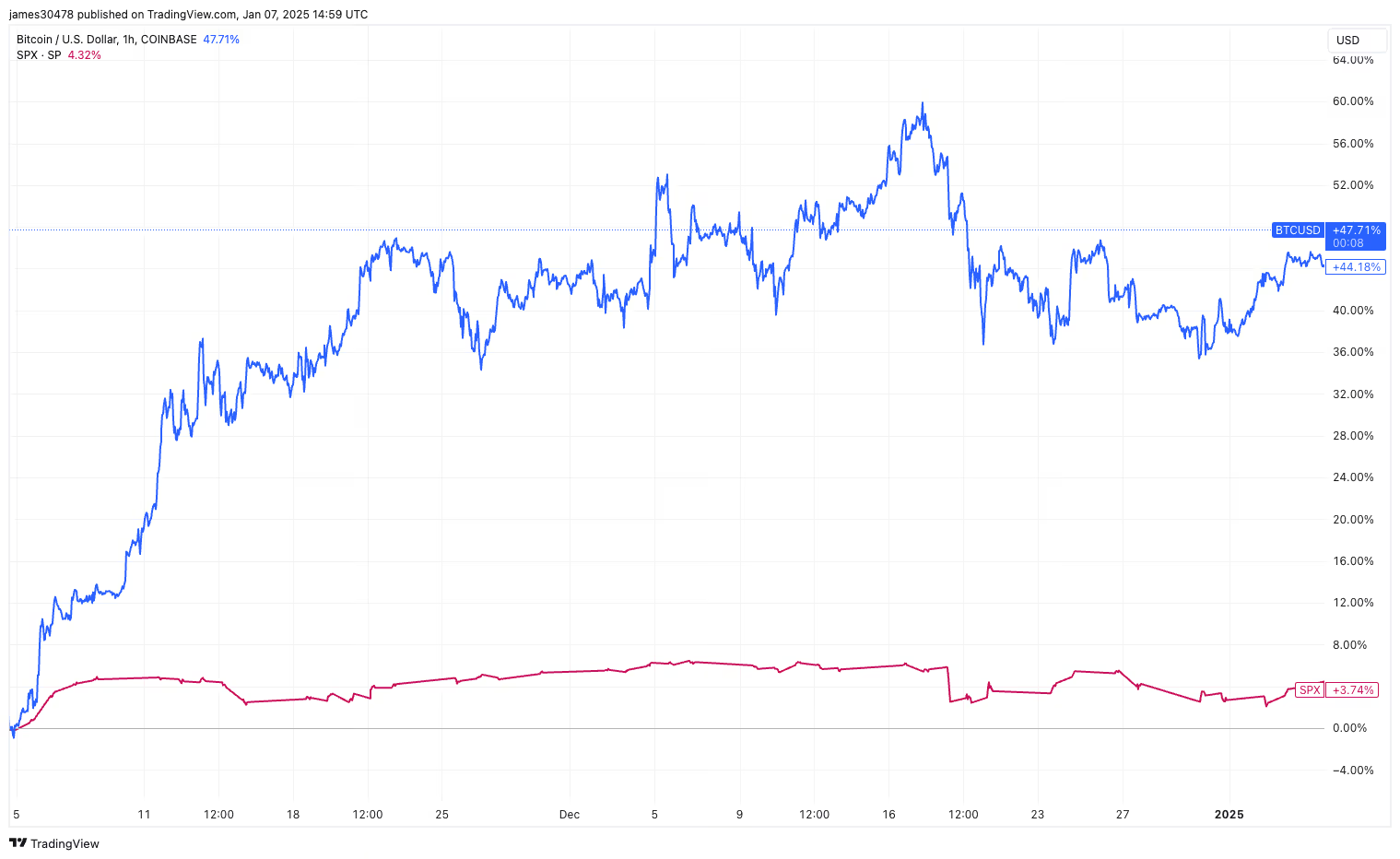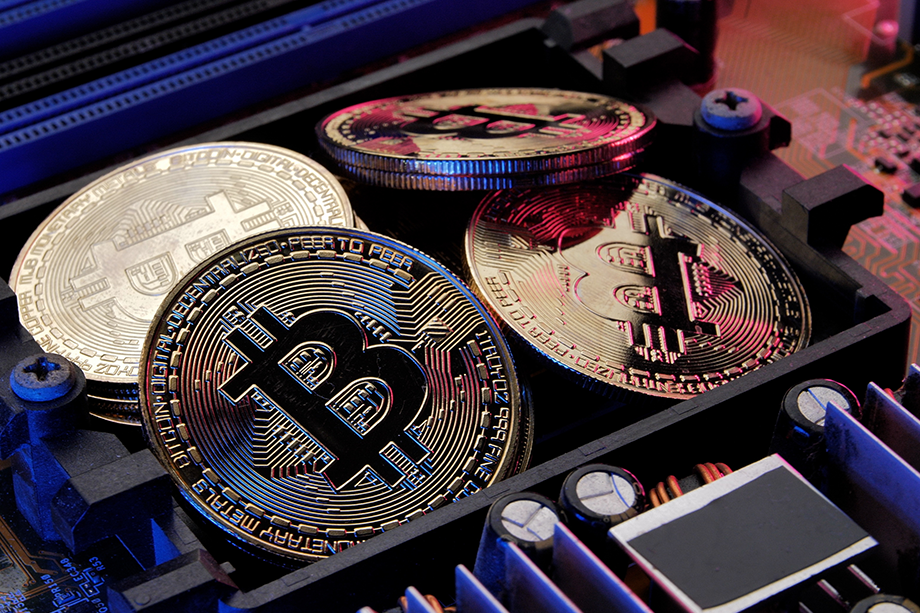Break Free From Conventional Thinking

Many people believe the safest way to save and build wealth towards a better future is by investing in the S&P 500 index fund. And for a long time, this was the right method for at least storing one’s wealth.
People would aim for the top 500 companies in the U.S., ignoring price and chasing long-term gains. On the surface, this strategy was sound. Many analysts started training and studying about how to get the best returns from the stock market with the least amount of risk and this was the golden ticket.
After all, the S&P 500 has delivered an 8% annual return over the past 50+ years, outperforming bonds and many other traditional investments.
But here’s the truth: this return has only tracked the money supply.
Think of all the companies that have come and gone which have been a part of the S&P 500 over the course of the past 50+ years.
Basically, you’re perpetually buying and selling off the losing companies while chasing yield in a system designed to lose purchasing power over time.
Everyone flocks to the S&P 500 because they know holding dollars long-term actually can destroy their wealth. If you don’t believe this, look at how far your money could go two decades ago compared to now.
The index fund isn’t a wealth generator; it’s a wealth preserver in an economy where inflation silently robs you every single year.
Enter Bitcoin: Changing the Financial Landscape
Now look at Bitcoin. You might be new to crypto, or maybe you’ve been in the scene long-term, no matter where you are in terms of knowledge it’s easy to see Bitcoin is a force that cannot be reckoned with.
Bitcoin is a tool unlike the dollar, gold, or any other form of money the world and humanity has ever known. Bitcoin is a complete paradigm shift. With a finite supply of 21 million coins, no amount of time, innovation, or manipulation can create more.
Its scarcity is its power.
When you hold Bitcoin, it’s not about chasing yields like index funds; you’re holding the most secure store of value ever created.
This fundamental trait has been embedded in Bitcoin’s DNA since its creation by Satoshi Nakamoto, and remains the main event of the currency’s value proposition.
Every investor faces an opportunity cost. Why settle for an asset that perpetually loses purchasing power when you could own the hardest money known to man? Bitcoin’s fixed supply changes everything.
Unlike the S&P 500, it doesn’t dilute your holdings by replacing weaker components. Instead, it’s an uncompromising system designed to reward those traders who understand its value over the long-term. But keep that in mind, the long-term is what matters more than short term gains.
Outperforming the S&P 500
Yes, Bitcoin carries risk. But history and data reveals an undeniable trend: Bitcoin consistently reaches new all-time highs following each halving. These halvings—events that reduce the number of new coins entering circulation—only serve to increase Bitcoin’s scarcity and drive its value upward.
From its inception, Bitcoin’s performance has rewarded long-term holders, often outperforming the S&P 500 in the process.
BTC has grown 3,333,101,566.67% from its inception (starting value of $0.003 in 2010) to today (current value of $99,993.05 at the time of writing this in 2025).
Really let that sink in. Can you think of any other comparable asset that has offered these kinds of returns in the same time frame as BTC?
- In 2010, gold was valued around $1,100 per ounce.
- By 2025, it trades at approximately $2,000 per ounce.
- The S&P 500 grew from ~1,150 in 2010 to ~4,600 in 2025.
- That’s a growth of approximately 300% over 15 years, with a compound annual growth rate (CAGR) of ~7-10%.
While index funds offer a predictable path of 6-8% annual returns, Bitcoin’s unfathomable growth appeals to those willing to embrace calculated risk and go outside of the traditional system.
I think we can see its performance showing that people desire to explore and break free from a financial system built on inflation and dependency.
Different Investments for Different Goals
Index funds and Bitcoin cater to different types of investors.
Index funds are reliable, low-risk vehicles ideal for those with high earning power and a preference for steady, inflation-beating returns.
You’ll never see astronomical gains, but you’ll sleep well knowing your money is compounding safely and will have a little more added to it when you’re ready to retire or pass it on to your kids.
Bitcoin, however, is for the brave. It’s for everyone, from all financial backgrounds. It’s for those who see that there are large cracks in the system and want a stake in a future that rewards both innovation and scarcity.
A lot of crypto’s image and popularity has been scarred by scammers, rug pulls, meme tokens and the like. Everyone is chasing that next token that’s going to “moon”, but there’s simplicity in simply building a portfolio of BTC over time.
It’s an asset that aligns with a philosophy of being in control of your own financial independence and self-sovereignty.
The Scarcity Advantage
Bitcoin’s supply cap of 21 million coins is what sets it apart from every other investment. Unlike the S&P 500, where companies can issue new shares and dilute the value, Bitcoin’s scarcity keeps its value preserved over time.
Each halving event underscores this principle, reducing the number of new coins and creating a deflationary effect that the traditional markets simply cannot replicate.
This is why BTC scares a lot of companies, banks and people and why so many are now scrambling to obtain as much of it as they can before the public gets it.
These companies are trying to push ETFs onto the public so they can own and benefit from holding the asset, but selling to the public the paper value instead of token ownership.
Portfolio Synergy
Investing in one doesn’t mean you can’t be invested in the other as well. Combining the stability of index funds with the growth and power of Bitcoin can create a portfolio that balances risk and reward. Index funds provide a steady foundation, while Bitcoin would add the potential for exponential growth.
This isn’t an either-or decision. You can have your cake and eat it too, just be mindful of factors like your financial goals and risk tolerance.
If you value security, index funds are always going to be a dependable choice. If you want to challenge the status quo and embrace a revolutionary asset, Bitcoin is the answer.
Final Thoughts
Do not think of the S&P 500 and Bitcoin as competitors, because they’re not; they’re tools for different purposes.
One is going to help to preserve wealth within the confines of a traditional system. It will do it better than keeping cash in savings where it will lose its value overtime. The other offers a way to escape it entirely.
Why settle for just following the status quo when you can embrace a system built on scarcity, independence, and access to true ownership of wealth? The choice is yours, choose wisely.(Disclaimer: This article is not financial advice and is intended for educational purposes only. Our articles are not sponsored or affiliated with any of the businesses, tokens, teams, or protocols mentioned. It is important to conduct thorough research and only invest an amount that you are comfortable potentially losing. For personalized financial advice, consult a professional.)





